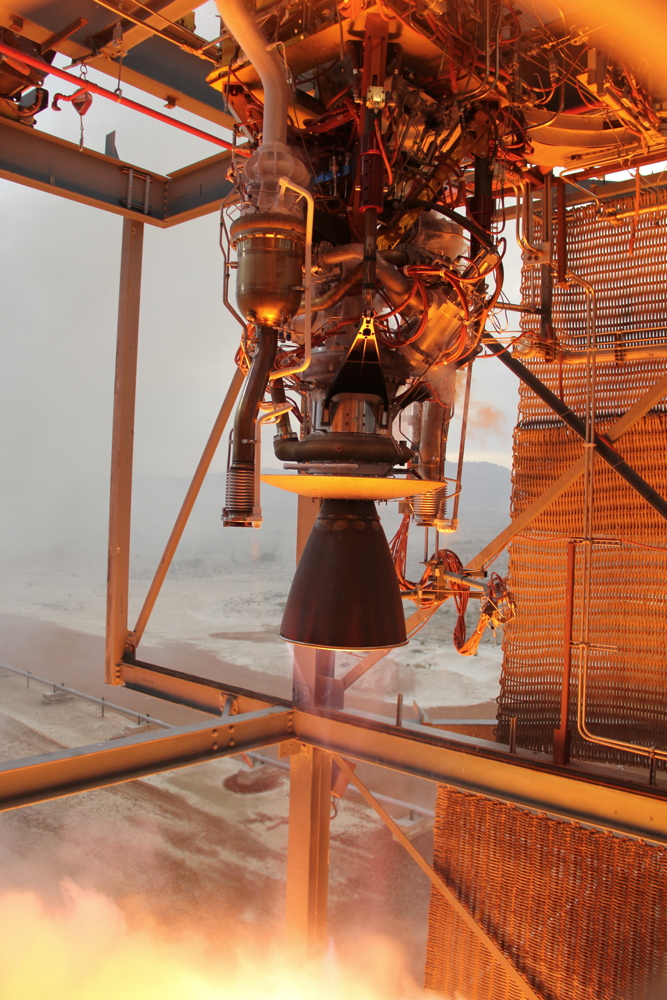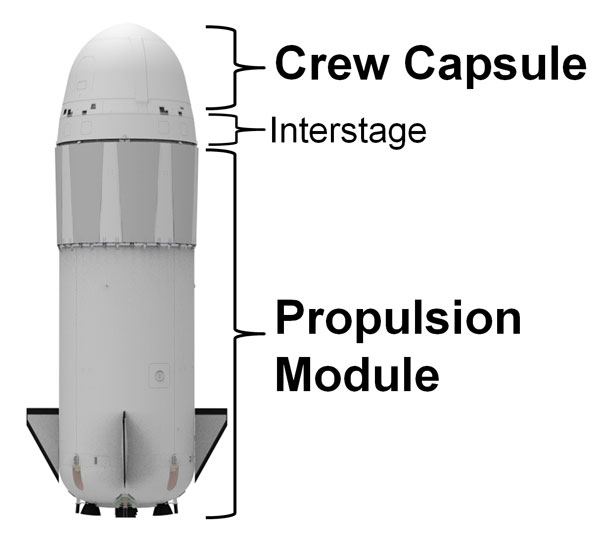Blue Origin to Launch Private Spaceship Test Flights This Year

Blue Origin, the secretive private spaceflight company founded by Amazon CEO Jeff Bezos, will begin suborbital flight tests this year of an innovative new spaceship — a milestone made possible by the firm's rocket engine success.
Blue Origin president Rob Meyerson told reporters today (April 7) that the company will fly unmanned suborbital tests of its New Shepard spacecraft later in 2015. The shakedown cruises are aimed at testing the performance and reusability of the commercial launch system's BE-3 rocket engine, which Blue Origin has cleared for suborbital flight.
"We're not releasing a flight date yet, but it will be later this year," Meyerson said in a teleconference. "It's soon." [Blue Origin's Spaceship Tests in Photos]

The New Shepard spacecraft is designed to launch a crew capsule carrying at least three astronauts or passengers on suborbital flights that reach over 62 miles (100 kilometers) in altitude — the boundary of space, Meyerson said. A reusable booster powered by Blue Origin's BE-3 rocket engine will launch the spacecraft from the company's West Texas proving grounds, and then return to make a land-based landing.
Ultimately, Blue Origin aims to fly paying passengers and researchers on round trips to suborbital space, though Meyerson said manned flights on New Shepard are still several years away. First, the spacecraft and its BE-3 engine must pass a rigorous testing regime.
"They could go as quickly, in the early days, as on a monthly schedule — a month between tests," Meyerson said. "But we expect over the next couple of years to be flying regularly with the New Shepard vehicle."
To achieve a vertical launch and vertical landing for New Shepard, the BE-3 rocket engine is capable of throttling up to 110,000 pounds of thrust, as well as back down to 20,000 pounds of thrust, Meyerson said. The rocket engine is fueled by liquid hydrogen and liquid oxygen propellant and has passed 450 separate tests during its development.
Get the Space.com Newsletter
Breaking space news, the latest updates on rocket launches, skywatching events and more!
Meyerson added that Blue Origin will make the BE-3 engine commercially available for vehicles beyond its own New Shepard, which is named in honor of Alan Shepard, the first American to reach space. The company is also developing an upper-stage variant of the BE-3 engine, called the BE-3U, for use on a future orbital vehicle, he said.
Even as Blue Origin moves forward with the BE-3 engine and New Shepard spacecraft, the company is also making progress on its next rocket engine: the BE-4.
Jeff Bezos unveiled the BE-4 rocket engine last September during an event that announced a partnership between Blue Origin and the U.S.-based launch provider United Launch Alliance (ULA). Blue Origin is developing the BE-4 engine to power ULA's new rocket, the Next-Generation Launch Vehicle.
Meyerson said the first tests of a BE-4 rocket engine should begin in 2016 and be complete by 2017.
Since its founding in 2000, Blue Origin has worked so quietly to develop its manned spacecraft technology that it earned a reputation for secrecy while achieving major milestones, such as a stunning 2006 test flight of a prototype vertical-launch and -landing craft.
In more recent years, the company's orbital Space Vehicle project was one of several concepts competing under NASA's commercial crew program to fly astronauts to the International Space Station. (The agency selected Boeing and SpaceX space capsules last year) In 2011, Blue Origin reported the loss of a prototype launch vehicle, but followed that in 2012 with the announcement of a successful crew capsule launch escape system test.
Meyerson said he feels Blue Origin is doing more these days to keep the public informed on its private spaceflight progress.
"I hope you've seen we're being a little more open," Meyerson said. "These are high-risk tests. We're not going to invite the media to those early tests. As we get more experience with the vehicle, there's going to be many opportunities to have people there real-time to watch."
Email Tariq Malik at tmalik@space.com or follow him @tariqjmalik and Google+. Follow us @Spacedotcom, Facebook and Google+. Original article on
Join our Space Forums to keep talking space on the latest missions, night sky and more! And if you have a news tip, correction or comment, let us know at: community@space.com.

Tariq is the Editor-in-Chief of Space.com and joined the team in 2001, first as an intern and staff writer, and later as an editor. He covers human spaceflight, exploration and space science, as well as skywatching and entertainment. He became Space.com's Managing Editor in 2009 and Editor-in-Chief in 2019. Before joining Space.com, Tariq was a staff reporter for The Los Angeles Times covering education and city beats in La Habra, Fullerton and Huntington Beach. In October 2022, Tariq received the Harry Kolcum Award for excellence in space reporting from the National Space Club Florida Committee. He is also an Eagle Scout (yes, he has the Space Exploration merit badge) and went to Space Camp four times as a kid and a fifth time as an adult. He has journalism degrees from the University of Southern California and New York University. You can find Tariq at Space.com and as the co-host to the This Week In Space podcast with space historian Rod Pyle on the TWiT network. To see his latest project, you can follow Tariq on Twitter @tariqjmalik.









